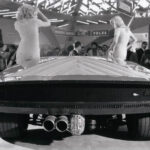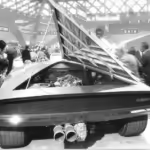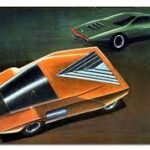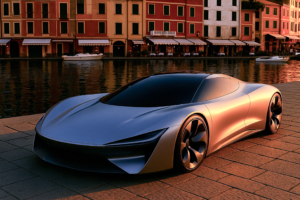The Lancia Stratos Zero: A Monumental Departure

The Lancia Stratos Zero, a creation of Bertone’s design maestro Marcello Gandini, stands as a monolithic testament to the design ethos of the late 1960s. Unveiled at the 1970 Turin Motor Show, it was a shock to the automotive world, a radical departure from established norms.

The Stratos Zero was more than a concept car; it was a manifesto. Its silhouette was an exaggerated wedge, a form so extreme it defied conventional automotive proportions. The car was barely 33 inches tall, a figure that defied imagination at the time. This radical stance was a direct response to the aerodynamic imperatives of the era, a pursuit of the ultimate low drag coefficient.
Gandini’s design was not merely an exercise in form; it was a functional expression of the era’s technological aspirations. The Stratos Zero was a testbed for innovative engineering solutions. Its chassis, derived from a Lancia Fulvia, was modified to accommodate the car’s extreme proportions. The suspension, steering, and braking systems were engineered to handle the demands of such a low, wide vehicle.

Radical Interior Design
The interior was equally radical. The driver entered through a canopy-like door that lifted upwards, revealing a minimalist cockpit. The instrumentation was ahead of its time, with a focus on digital displays and ergonomic controls. The steering wheel was retractable to facilitate ingress and egress.
While the Stratos Zero remained a one-off concept, its influence on automotive design is undeniable. It pushed the boundaries of what was possible, inspiring designers to explore new forms and functions. The wedge shape, once a radical experiment, became a ubiquitous motif in the automotive landscape.

The Stratos Zero was more than just a car; it was a statement of intent. It signaled the arrival of a new era in automotive design, an era characterized by experimentation, innovation, and a relentless pursuit of the extraordinary.
The Lancia Stratos Zero was not merely a design exercise; it was a technical marvel. Its extreme proportions and innovative approach to packaging presented engineers with unprecedented challenges.

A Groundbreaking Chassis
The Stratos Zero’s chassis was a testament to the ingenuity of its creators. Based on a shortened Lancia Fulvia platform, it underwent extensive modifications to accommodate the car’s radical dimensions. The wheelbase was shortened, and the track widened to provide a stable and planted stance. The suspension system was completely overhauled to cope with the car’s low center of gravity and wide stance.

One of the most significant challenges was integrating the steering and suspension components within the limited space available. Engineers had to develop innovative solutions to ensure precise handling and responsive steering while maintaining a low profile.

Aerodynamics: A Science of Extremes
The Stratos Zero’s wedge shape was not merely an aesthetic choice; it was a calculated aerodynamic strategy. The car’s flat underbody and carefully sculpted surfaces minimized drag, while the front and rear spoilers generated downforce. The pop-up headlights, a signature design element, contributed to the car’s aerodynamic efficiency when retracted.
Wind tunnel testing was crucial in refining the Stratos Zero’s shape. Engineers meticulously analyzed airflow patterns to identify areas for improvement and optimize the car’s performance. The result was a vehicle that not only looked dramatic but also cut through the air with remarkable efficiency.


Materials and Construction: Pushing the Boundaries
The Stratos Zero was a showcase of innovative materials and construction techniques. To achieve the car’s extreme proportions and low weight, engineers experimented with a variety of materials. While the specific composition of the body panels remains somewhat shrouded in mystery, it is believed that a combination of aluminum and fiberglass was used.
The car’s chassis was likely constructed using steel, a material that offered the necessary strength and rigidity. However, to offset the weight of the steel chassis, engineers employed lightweight components throughout the vehicle. The use of thin-gauge steel, aluminum, and composite materials helped to keep the overall weight in check.


A Visionary Interior
The Stratos Zero’s interior was as radical as its exterior. The minimalist design focused on functionality and driver ergonomics. The use of advanced materials and innovative construction techniques created a futuristic atmosphere. The instrument panel was likely dominated by a single, large instrument cluster, perhaps incorporating early forms of digital display technology.
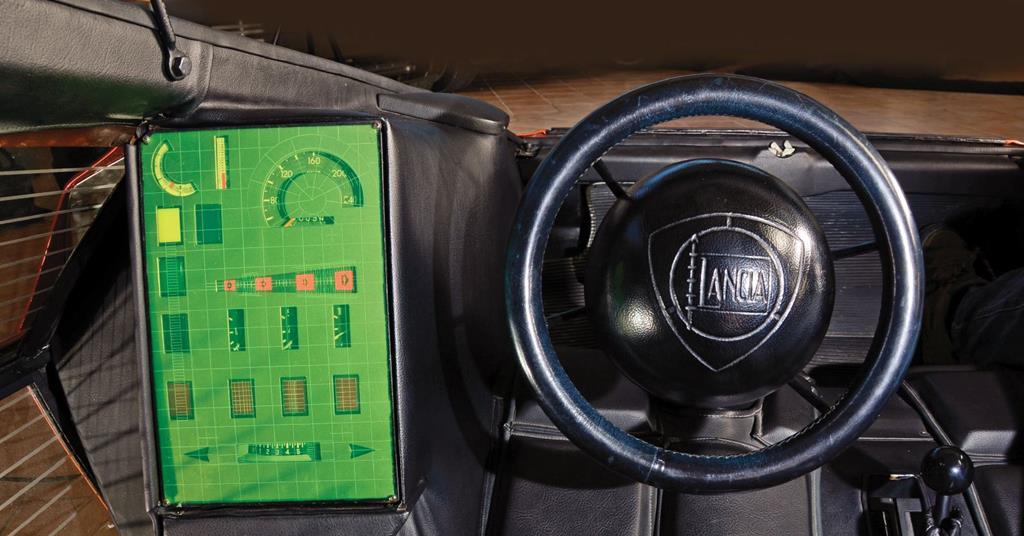
The seating position was low and reclined, emphasizing the driver-oriented nature of the car. The steering wheel was probably telescopic and adjustable to accommodate drivers of different sizes. The overall layout aimed to create a sense of unity between the driver and the car, enhancing the driving experience.
While the Stratos Zero remains a one-off concept, its influence on automotive design is undeniable. It pushed the boundaries of what was possible, inspiring generations of designers and engineers to strive for greater innovation and creativity.






